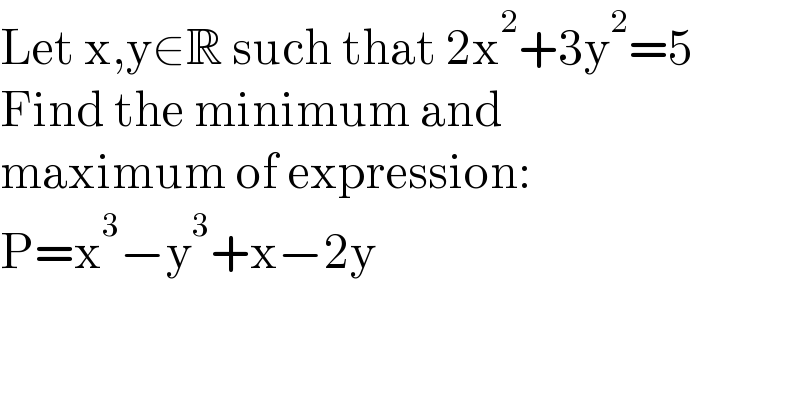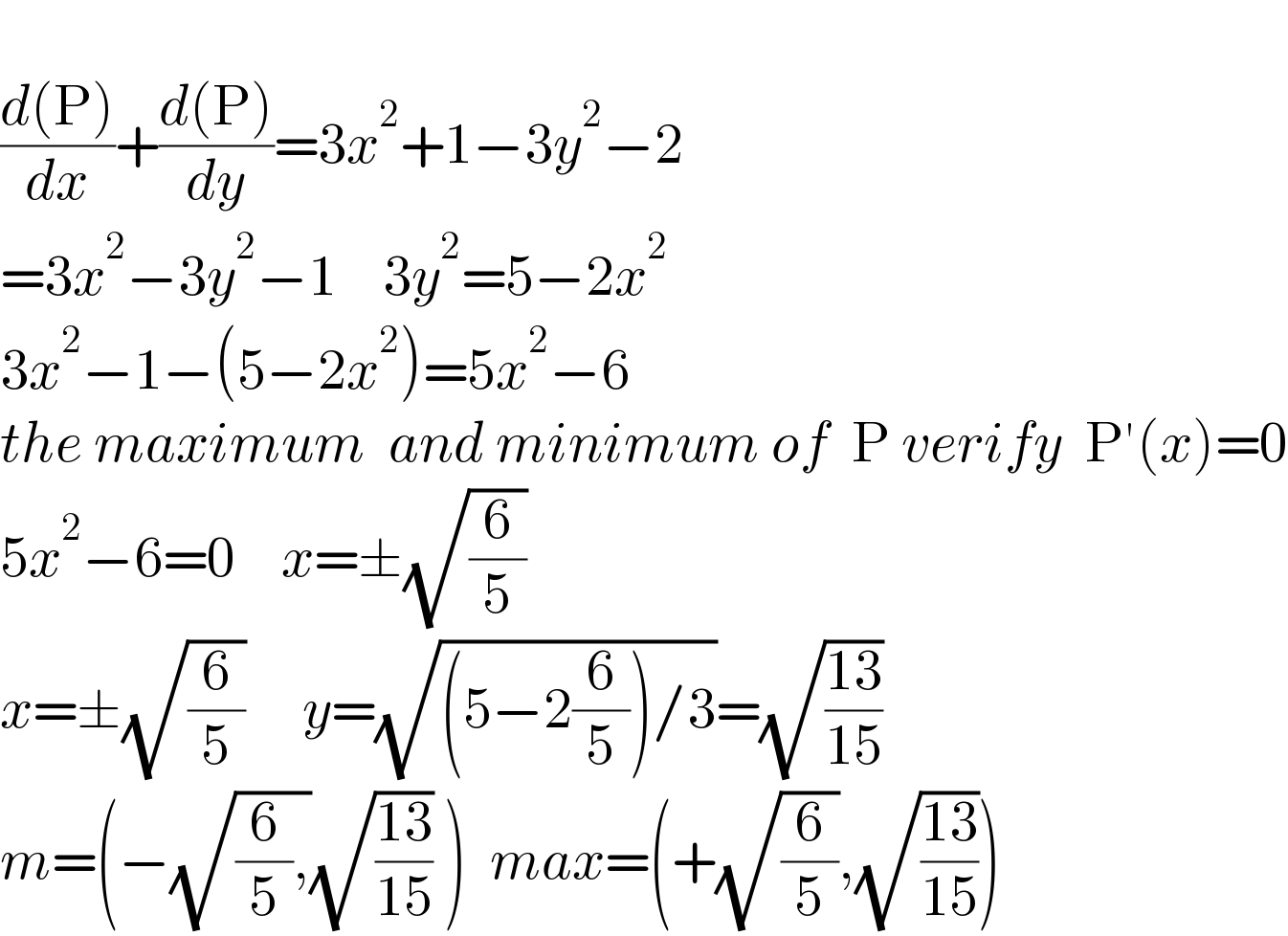
Question and Answers Forum
Question Number 173707 by dragan91 last updated on 16/Jul/22

Answered by a.lgnaoui last updated on 17/Jul/22

Commented by mr W last updated on 17/Jul/22

Answered by mr W last updated on 17/Jul/22
![G=x^3 −y^3 +x−2y+λ(2x^2 +3y^2 −5) (∂G/∂x)=3x^2 +1+4λx=0 ⇒x=((−2λ±(√(4λ^2 −3)))/3) (∂G/∂y)=−3y^2 −2+6λy=0 ⇒y=((3λ±(√(9λ^2 −6)))/3) (∂G/∂λ)=2x^2 +3y^2 −5=0 ⇒2[((−2λ±(√(4λ^2 −3)))/3)]^2 +3[((3λ±(√(9λ^2 −6)))/3)]^2 −5=0 that′s 4 equations which all can′t be solved exactly. we get approximately λ=−1.3191, P=5.8033=max λ=0.8872, P=−4.9111 λ=−0.8872, P=4.9111 λ=1.3191, P=−5.8033=min](Q173745.png)
Commented by mr W last updated on 17/Jul/22

Commented by Tawa11 last updated on 17/Jul/22

Commented by a.lgnaoui last updated on 17/Jul/22

Answered by MJS_new last updated on 17/Jul/22
![2x^2 +3y^2 =5 ⇒ y=σ((√(3(5−2x^2 )))/3)∧σ=±1 P(x)=x(x^2 +1)+σ(((2x^2 −11)(√(3(5−2x^2 ))))/9) P ′(x)=0 3x^2 +1−σ((2(√3)x(2x^2 −7))/(3(√(5−2x^2 ))))=0 ⇒ x^6 −((211)/(70))x^4 +(8/5)x^2 −(3/(14))=0 t=x^2 t^3 −((211)/(70))t^2 +(8/5)t−(3/(14))=0 good luck! t=(3/(14)) is a solution t=(3/(14))∨t=(7/5)±((2(√6))/5) now it′s easy to get min (P(x)) =−(((9+44(√6))(√5))/(45)) at x=−(((1+(√6))(√5))/5)∧y=(((3−2(√6))(√5))/(15)) max (P(x))=(((9+44(√6))(√5))/(45)) at x=(((1+(√6))(√5))/5)∧y=−(((3−2(√6))(√5))/(15)) [approximated values ≈±5.80272 at x≈±1.54266 ∧y≈±.283083]](Q173753.png)
Commented by Tawa11 last updated on 17/Jul/22

